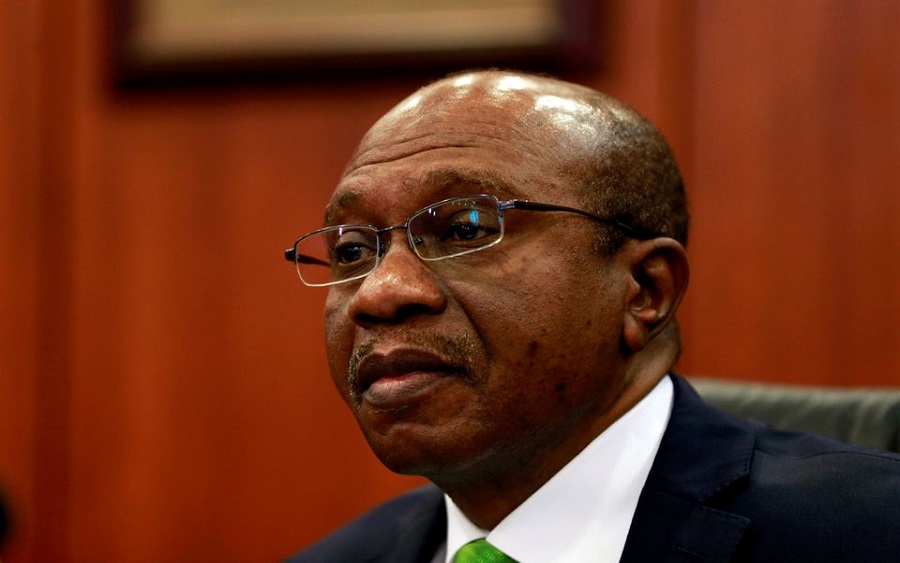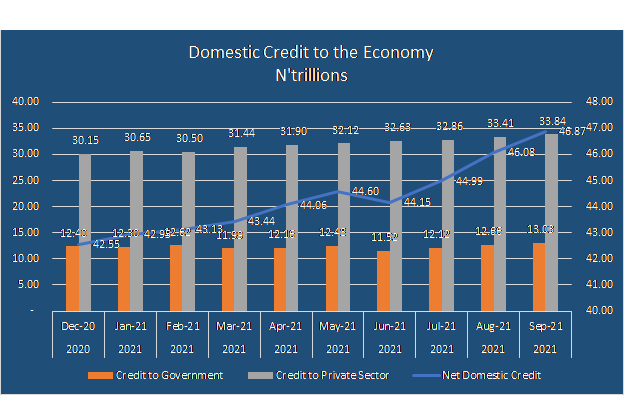Nigeria’s credit to the private sector ballooned to another all-time high of N33.8 trillion as of September 2021. This is according to data from the Central Bank’s money and credit statistics.
The country’s private sector has witnessed a rise in borrowing in recent years, due to a combination of central bank monetary policies, innovation in technology and credit profiling; as well as a surge in FinTech companies participating in the lending space.
Back in August, Nairametrics reported that credit to the private sector had risen to an all-time high of N32.6 trillion only for the economy to take on an additional N1.2 trillion in new net borrowing in three months. This year alone, the private sector has recorded a net increase of N3.69 trillion in net borrowings. Over the last 5 years, credit to the private sector has risen by over 100% growing from N18.7 trillion in December 2015 and nearly doubling to N32.6 trillion this year.

The private sector is not the only sector borrowing. Credit to government has also increased to N13 trillion, the highest since the central bank started collating data in 1960. Nigeria is now in one of its highest-ever credit growth phases amassing a total net domestic credit of N46.8 trillion or 28.5% of GDP.
What the CBN is saying
At the last Monetary Policy Committee meeting of the Central Bank held in September, it noted the effect of the growth in credit on stimulating the economy, encouraging banks to continue to channel credit to the real sector.
“The Committee noted the improvement in lending to the real sector following the introduction of the Loans-to-Deposit Ratio (LDR) in 2019. Industry gross credit increased by N6.63 trillion from N15.57 trillion at end-May, 2019 to N22.20 trillion at end-July, 2021. The credit growth was largely recorded in manufacturing, oil and gas and agriculture sectors,” they said.
The manufacturing and oil and gas sectors dominate most of the lending in Nigeria with 15.7% and 25.4% respectively as a percentage of the total loans. Commercial and Merchant banks currently dominate the lending space in Nigeria with over 65% of the total loans to the private sector (based on 2020 data). Microfinance banks have also recorded an increase in their lending over the years going from N305 billion as of December 2019 to N552 billion as of December 2020.
Despite the increase in borrowing, lending rates remain high. For example, the maximum lending rate is about 27% according to CBN data for September 2021. Microfinance banks also charge their customers in excess of 4% monthly on average for short-term loans, a market that has seen a rise over the years.
In response to the risk of higher credit exposure, the apex bank has also advised commercial banks to adopt risk mitigation measures as they take on more risk assets.
“While the Committee was cognizant of the credit risks associated with lending in the current economic climate, it urged Nigerian banks to extend more credit to businesses and consumers to facilitate a seamless recovery of output growth, reduce unemployment and stabilize prices,” they said.
Net Domestic Assets rise
Nigeria’s net domestic assets also rose in tandem in the period under review. According to Central Bank Data, Nigeria’s net domestic assets rose to N34.5 trillion, a surge of over N2.4 trillion from June 2021. This may also be attributed to the rise in domestic credit. In contrast, Nigeria’s Net Domestic assets fell from N8.2 trillion to N5.8 trillion suggesting that the economy owned more foreign liabilities than assets in September.
Nairametrics Analysts believe the huge drop could be due to an increase in foreign-denominated loans. During the month of September, the Central Bank received a loan of $4 billion while commercial banks like Access Bank also tapped the bond market for foreign loans.


